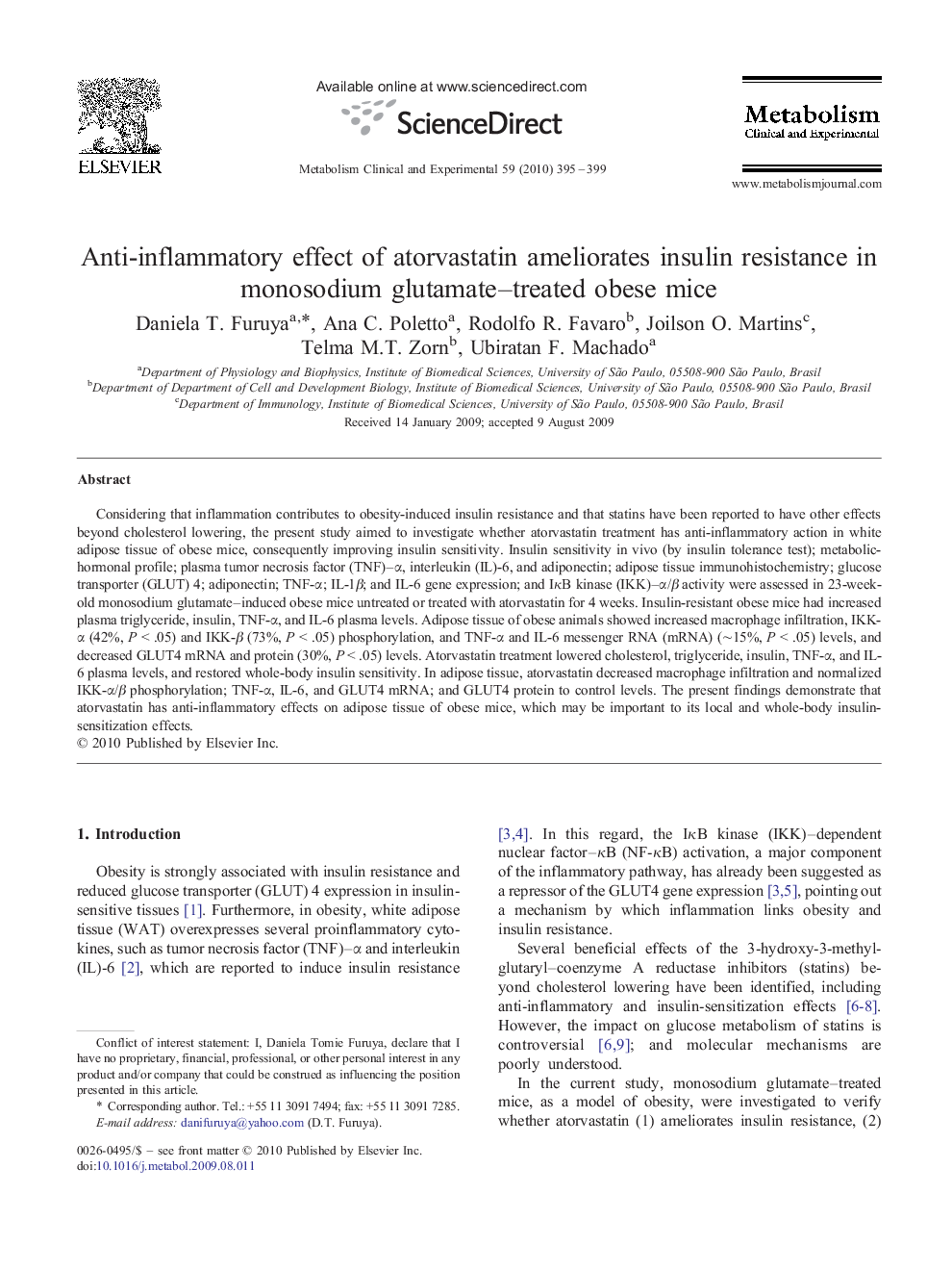| Article ID | Journal | Published Year | Pages | File Type |
|---|---|---|---|---|
| 2807036 | Metabolism | 2010 | 5 Pages |
Considering that inflammation contributes to obesity-induced insulin resistance and that statins have been reported to have other effects beyond cholesterol lowering, the present study aimed to investigate whether atorvastatin treatment has anti-inflammatory action in white adipose tissue of obese mice, consequently improving insulin sensitivity. Insulin sensitivity in vivo (by insulin tolerance test); metabolic-hormonal profile; plasma tumor necrosis factor (TNF)–α, interleukin (IL)-6, and adiponectin; adipose tissue immunohistochemistry; glucose transporter (GLUT) 4; adiponectin; TNF-α; IL-1β; and IL-6 gene expression; and IκB kinase (IKK)–α/β activity were assessed in 23-week-old monosodium glutamate–induced obese mice untreated or treated with atorvastatin for 4 weeks. Insulin-resistant obese mice had increased plasma triglyceride, insulin, TNF-α, and IL-6 plasma levels. Adipose tissue of obese animals showed increased macrophage infiltration, IKK-α (42%, P < .05) and IKK-β (73%, P < .05) phosphorylation, and TNF-α and IL-6 messenger RNA (mRNA) (∼15%, P < .05) levels, and decreased GLUT4 mRNA and protein (30%, P < .05) levels. Atorvastatin treatment lowered cholesterol, triglyceride, insulin, TNF-α, and IL-6 plasma levels, and restored whole-body insulin sensitivity. In adipose tissue, atorvastatin decreased macrophage infiltration and normalized IKK-α/β phosphorylation; TNF-α, IL-6, and GLUT4 mRNA; and GLUT4 protein to control levels. The present findings demonstrate that atorvastatin has anti-inflammatory effects on adipose tissue of obese mice, which may be important to its local and whole-body insulin-sensitization effects.
